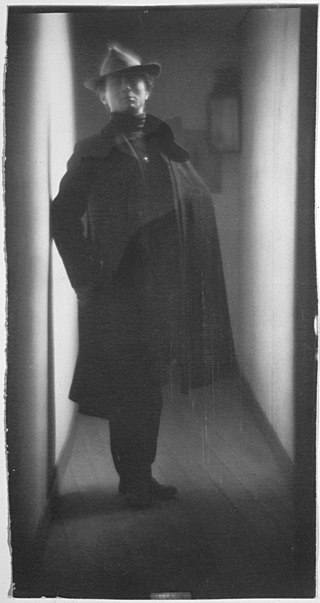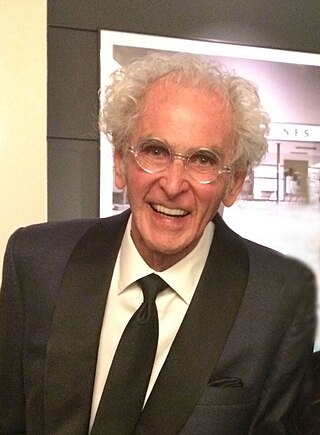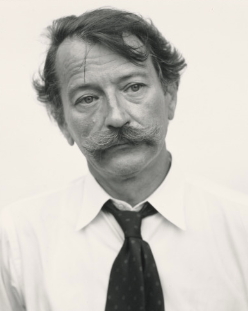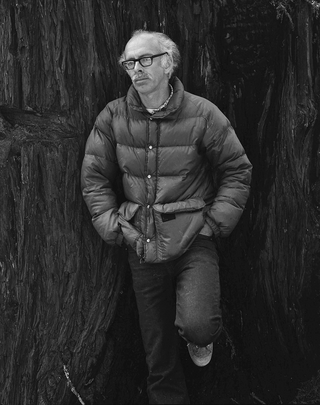Related Research Articles

Ansel Easton Adams was an American landscape photographer and environmentalist known for his black-and-white images of the American West. He helped found Group f/64, an association of photographers advocating "pure" photography which favored sharp focus and the use of the full tonal range of a photograph. He and Fred Archer developed a system of image-making called the Zone System, a method of achieving a desired final print through a technical understanding of how the tonal range of an image is the result of choices made in exposure, negative development, and printing.

Edward Jean Steichen was a Luxembourgish American photographer, painter, and curator. He is considered among the most important figures in the history of photography.

Paul Strand was an American photographer and filmmaker who, along with fellow modernist photographers like Alfred Stieglitz and Edward Weston, helped establish photography as an art form in the 20th century. In 1936, he helped found the Photo League, a cooperative of photographers who banded together around a range of common social and creative causes. His diverse body of work, spanning six decades, covers numerous genres and subjects throughout the Americas, Europe, and Africa.

Jerry Norman Uelsmann was an American photographer.

Minor Martin White was an American photographer, theoretician, critic, and educator.

Thaddeus John Szarkowski was an American photographer, curator, historian, and critic. From 1962 to 1991 Szarkowski was the director of photography at New York's Museum of Modern Art (MoMA).

Fine-art photography is photography created in line with the vision of the photographer as artist, using photography as a medium for creative expression. The goal of fine-art photography is to express an idea, a message, or an emotion. This stands in contrast to representational photography, such as photojournalism, which provides a documentary visual account of specific subjects and events, literally representing objective reality rather than the subjective intent of the photographer; and commercial photography, the primary focus of which is to advertise products or services.
Laura McPhee is an American photographer known for making detailed large-format photographs of the cultural landscape. Her images raise questions about human effects on the environment and the nature of humankind's complex and contested relationship to the earth.
John Sexton is an American fine art photographer who specializes in black and white traditional analog photography.
Binh Danh is an American artist known for chlorophyll prints and daguerreotypes on the subjects of war, immigration, and National Parks.
Alma Ruth Lavenson was an American photographer active in the 1920s and 1930s. She worked with and was a close friend of Ansel Adams, Imogen Cunningham, Edward Weston and other photographic masters of the period.

Todd Webb was an American photographer notable for documenting everyday life and architecture in cities such as New York City, Paris as well as from the American west. He traveled extensively during his long life and had important friendships with artists such as Berenice Abbott, Walker Evans, Alfred Stieglitz, Georgia O'Keeffe, Ansel Adams, Dorothea Lange, and Harry Callahan.

Moonrise, Hernandez, New Mexico is a black-and-white photograph taken by Ansel Adams, late in the afternoon on November 1, 1941, from a shoulder of highway US 84 / US 285 in the unincorporated community of Hernandez, New Mexico. The photograph shows the Moon rising in a dominating black sky above a collection of modest dwellings, a church and a cross-filled graveyard, with snow-covered mountains in the background. Adams captured a single image, with the sunset lighting the white crosses and buildings. Because Adams did not date the image, attempts have been made to determine a date from astronomical information in the photograph. It is one of Adams' most popular works.

Taos Pueblo is a book by Ansel Adams and Mary Hunter Austin. Originally published in 1930, it is the first book of Adams' photographs. A seminal work in his career, it marks the beginning of a transition from his earlier pictorialist style to his signature sharp-focused images of the Western landscape. It has been described as "an astonishingly poignant…masterpiece" and "the greatest pictorial representation of the American West."

Dody Weston Thompson was a 20th-century American photographer and chronicler of the history and craft of photography. She learned the art in 1947 and developed her own expression of “straight” or realistic photography, the style that emerged in Northern California in the 1930s. Dody worked closely with contemporary icons Edward Weston, Brett Weston and Ansel Adams during the late 1940s and through the 1950s, with additional collaboration with Brett Weston in the 1980s.

Ray McSavaney was an American fine-art photographer based in Los Angeles, California. Throughout a spartan but active life, practicing classical Western black and white fine art photography, he made enduring photographs of buildings, bridges, and street scenes of the vast city, ancient ruins and panoramic vistas of the Southwest, and studio setups with varied floral subjects. He died from lymphoma in Los Angeles Veteran's Hospital. Warm tributes to his life and career by some of his close friends and colleagues appear in a ‘celebration of life’ memorial recounted in ‘View Camera’ magazine.

Monolith, the Face of Half Dome, Yosemite National Park, California is a black and white photograph taken by Ansel Adams in 1927 that depicts the western face of Half Dome in Yosemite, California. In the foreground of the photo, viewers are able to see the texture and detail of the rock as well as the background landscape of pine trees and the Tenaya Peak. Monolith was used by the Sierra Club as a visual aid for the environmental movement, and was the first photograph Adams made that was based on feelings, a concept he would come to define as visualization and prompt him to create the Zone System. The image stands as a testament to the intense relationship Adams had with the landscape of Yosemite, as his career was largely marked by photographing the park. Monolith has also physically endured the test of time as the original glass plate negative is still intact and printable. The photograph is a part of the portfolio Parmelian Prints of the High Sierras, released in 1927.
Rebecca A. “Becky” Senf is an American writer, and curator working in the field of photography. She is the Chief Curator at the Center for Creative Photography (CCP). She joined the CCP as Norton Family Assistant Curator in 2007, which was a joint appointment with Phoenix Art Museum, and was promoted to Chief Curator in 2016.

Lodgepole Pines, Lyell Fork of the Merced River, Yosemite National Park is a black-and-white photograph taken by Ansel Adams in 1921. It is one of the photographs that he took at the beginning of his career, when he was following pictorialism, a style inspired by painting, that he soon would abandon for a more realistic approach to photography. This photograph with the title A Grove of Tamarack Pine was included in his Parmelian Prints of the High Sierras portfolio, published in 1927, and its also known by that name.
Winter Sunrise, Sierra Nevada, from Lone Pine, California is a black and white photograph taken by American photographer Ansel Adams, in 1944. It depicts the Sierra Nevada, as seen from Lone Pine, in California.
References
- 1 2 Gallery, The Ansel Adams (September 18, 2020). "Ansel Adams Aspens, New Mexico, 1958 - The AA Gallery".
- ↑ Ansel Adams, Examples: The Making of 40 Photographs, Little, Brown & Co., Boston, 2007, p. 61
- ↑ Ansel Adams, Examples: The Making of 40 Photographs, Little, Brown & Co., Boston, 2007, p. 63
- ↑ "Sotheby's".
- ↑ "Christie's".
- ↑ "Ansel Adams. Aspens, Northern New Mexico. 1958 | MoMA".
- ↑ "Ansel Adams | Aspens, Northern New Mexico". whitney.org.
- ↑ "Aspens, Northern New Mexico". National Museum of American History.
- ↑ "Aspens, Northern New Mexico (x1969-409)". artmuseum.princeton.edu.
- ↑ "Aspen, Northern New Mexico | All Works | The MFAH Collections". emuseum.mfah.org.